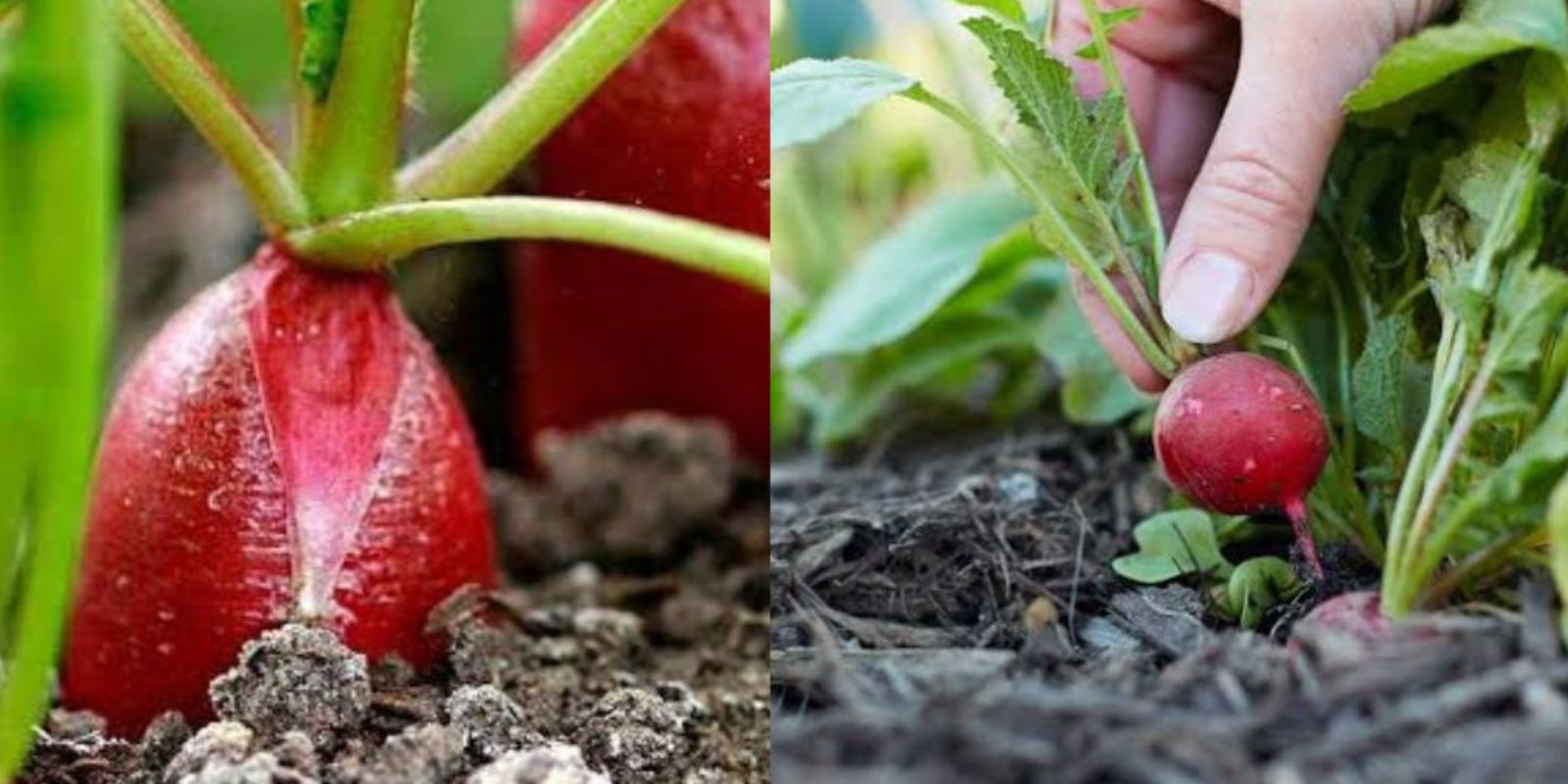Radishes are one of the easiest and fastest-growing vegetables, making them perfect for both beginner and experienced gardeners. They add a crisp texture and a mild, peppery flavor to salads and dishes, and with the right techniques, you can grow red radishes that are sweeter and juicier. This article will guide you through everything you need to know about growing red radishes at home—whether in the garden or in containers—ensuring a successful and bountiful harvest.
Why Grow Red Radishes?
Red radishes (Raphanus sativus) are an excellent vegetable to grow for many reasons:
✅ Fast-Growing: Most radish varieties are ready to harvest within 20–30 days.
✅ Low Maintenance: They require minimal space, making them ideal for small gardens or containers.
✅ Nutrient-Rich: Packed with vitamins C, B6, potassium, and fiber.
✅ Natural Soil Aerators: Their roots help break up compacted soil, improving garden health.
If you want to cultivate fresh, homegrown radishes that are sweeter, crunchier, and abundant, follow this step-by-step guide.
Step 1: Choosing the Right Radish Variety
Before planting, select the right radish variety that suits your needs:
- Cherry Belle: A classic round, bright red radish with a crisp texture and mild flavor.
- French Breakfast: An elongated variety with a sweeter taste.
- Sparkler: Red with a white tip, known for its juicy and tender texture.
- Champion: A cold-tolerant variety with a mild, sweet taste.
Choose a variety that matches your climate and taste preference.
Step 2: Preparing the Soil for Optimal Growth
Red radishes thrive in loose, well-drained soil with plenty of organic matter. Here’s how to prepare the soil:
✅ Use Sandy Loam Soil: Avoid heavy clay soil, as it can cause radishes to grow misshapen.
✅ Ensure Proper Drainage: Radishes dislike soggy conditions, so amend soil with sand or compost.
✅ Maintain pH Levels: Radishes grow best in soil with a pH of 6.0 to 7.0.
✅ Add Organic Matter: Mix compost or aged manure into the soil for added nutrients.
Pro Tip: Avoid adding too much nitrogen-rich fertilizer, as it encourages leafy growth but small radish bulbs.
Step 3: Planting Radish Seeds Correctly
When to Plant?
Radishes prefer cool weather, making spring and fall the best seasons for planting.
How to Sow the Seeds?
1️⃣ Make Furrows: Create shallow rows about ½ inch deep in the soil.
2️⃣ Space the Seeds: Plant seeds 1 inch apart and cover lightly with soil.
3️⃣ Water Gently: Keep the soil evenly moist, but avoid overwatering.
💡 Tip: For continuous harvests, plant a new batch of seeds every 7–10 days!
Step 4: Caring for Your Radish Plants
To ensure healthy, sweet, and plump radishes, follow these care tips:
1. Provide Consistent Watering
💧 Radishes need regular watering to prevent them from becoming woody or bitter. Keep soil moist but not waterlogged.
2. Thin Out Seedlings
🌱 When seedlings reach about 2 inches tall, thin them out to 2–3 inches apart. This ensures they develop properly without overcrowding.
3. Provide Full Sunlight
☀️ Radishes grow best with at least 6 hours of sunlight daily. If grown in partial shade, they may develop more leaves than roots.
4. Use Mulch to Retain Moisture
🌿 A layer of straw or organic mulch helps keep the soil moist and prevents weeds from competing with your radish plants.
Step 5: Harvesting at the Right Time
Radishes are ready to harvest in about 20–30 days. Here’s how to know when they’re at their peak:
🔴 Size Check: Pull one radish to check its size—it should be about 1 inch in diameter.
🔴 Firmness Test: A ripe radish should be firm and smooth.
🔴 Taste Check: Overgrown radishes can become woody and spicy, so don’t wait too long!
To harvest, gently pull the radish from the soil, trim the leaves, and wash thoroughly before consuming.
Step 6: Storing and Using Your Radishes
Radishes are best enjoyed fresh, but if you need to store them:
✅ Refrigerate: Store in a plastic bag in the fridge for up to 2 weeks.
✅ Keep the Leaves: If using within a few days, keep leaves attached to maintain moisture.
✅ Pickle or Ferment: Preserve radishes by pickling for long-term use.
Common Problems and How to Fix Them
Even though radishes are easy to grow, you may encounter a few issues:
1. Radishes Growing All Leaves, No Bulbs
❌ Problem: Too much nitrogen in the soil.
✅ Solution: Use low-nitrogen fertilizer and thin out seedlings properly.
2. Cracked or Split Radishes
❌ Problem: Uneven watering.
✅ Solution: Keep the soil evenly moist, especially during hot weather.
3. Small or Misshapen Radishes
❌ Problem: Overcrowding.
✅ Solution: Thin out plants early to allow enough space for growth.
Growing Radishes in Containers
If you have limited garden space, radishes grow exceptionally well in pots! Here’s what you need:
✅ Container Depth: At least 6 inches deep.
✅ Spacing: Plant 1 inch apart in rows or clusters.
✅ Soil Mix: Use a light, well-draining potting mix with compost.
✅ Watering: Containers dry out faster, so water regularly to prevent stress.
Conclusion: Enjoy Your Homegrown Red Radishes!
Growing red radishes at home is rewarding, simple, and fun! With proper soil, watering, and care, you can enjoy sweet, crisp radishes in just a few weeks. Whether you’re growing them in a garden bed or a container, these fast-growing vegetables will provide fresh, healthy harvests for you and your family.
💬 Have you tried growing radishes before? Share your experience in the comments!

